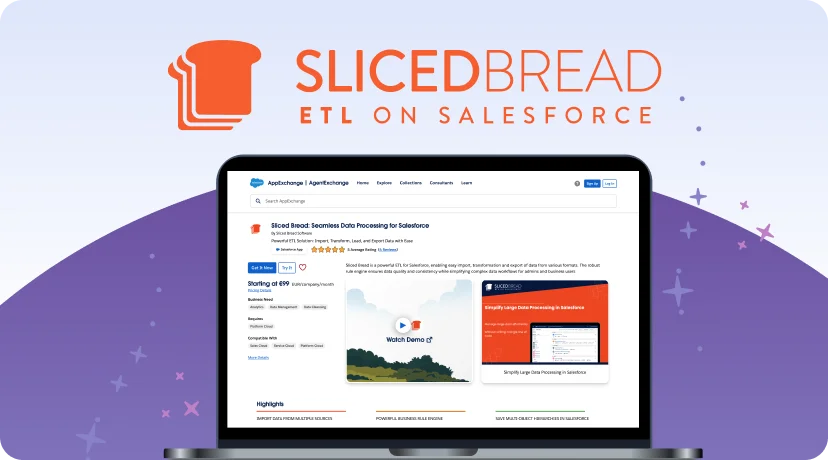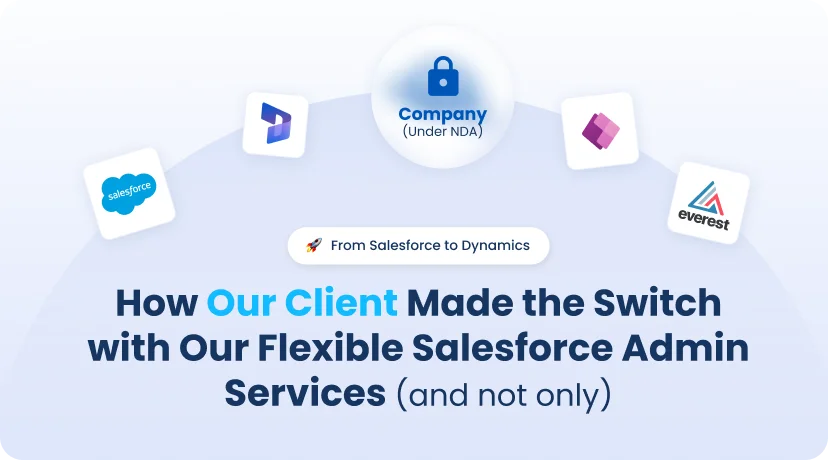
Introduction
Hiring ERP talent is still hard. Roles stay open for weeks, sometimes months, while roadmaps don’t slow down. Budgets are fixed and internal teams handle support, fixes, and new features at the same time. Many leaders add offshore capacity to cover time zones and bring in Certinia Finance skills. This keeps delivery on schedule without adding permanent headcount. It also reduces single-person dependency and spreads context across the team.
Here’s why this approach fits IT right now. Globally, managed-services ITO ACV was $7.8B in Q2 this year, with application development & maintenance up ~5% year over year, per the ISG Index.
Europe still shows solid demand for tech talent: in Q1 this year the EU’s “Information & Communication” job-vacancy rate was ~2.5% (EU) and 2.7% (euro area), indicating continued hiring pressure for IT roles. That makes local recruiting slower and pushes teams to add capacity offshore.
If speed is your constraint, hire FinancialForce developer offshore for a defined sprint. Start with a clear backlog and a weekly demo. Keep a named product owner on your side to make decisions fast and unblock the team.
- Global hiring/offshoring trends
- What is Certinia (FinancialForce) ERP?
- Why the ERP developer role is critical for Certinia(FinancialForce)
- Reasons Companies Hire a Certinia ERP Developer
- Key Responsibilities of a Certinia ERP Developer
- Hiring Options: In-House vs. Offshore vs. Freelance
- Pricing for Hiring a Remote FinancialForce Developer
- FAQs
- Conclusion
Global hiring/offshoring trends
Offshoring isn’t just about cost now. It’s about access to skills and round-the-clock delivery. Services trade is strong, and digital work crosses borders easily. That supports global hiring for ERP and integration roles.
- Skills scarcity is persistent. Most employers report difficulty filling roles. Offshoring expands the funnel and speeds up time to hire for rare profiles like Certinia developers and admins.
- Sourcing is now multi-dimensional. Leaders mix internal teams, global in-house centers, and external providers to scale capacity and reduce risk. This is not just about cost; it’s a skills and resilience play.
- Budgets are scrutinized. Spend keeps growing, but leadership expects efficiency. Offshoring helps convert fixed hiring bottlenecks into flexible capacity.
If you need to hire FinancialForce developer offsite talent quickly, offshoring is often the most direct way to get quality plus coverage. For ERP work, distributed delivery is normal now. Teams run discovery and design on short calls, then move into build, test, and release with async updates. This suits FinancialForce ERP services because the process is structured: project setup, staffing, time/expense, billing events, revenue, and close. With written playbooks, offshore squads slot into that flow without slowing your core team.
What is Certinia (FinancialForce) ERP?
Certinia is the new name for FinancialForce (rebrand announced May 2023). It runs natively on the Salesforce Platform, bringing services-centric ERP into the same ecosystem as sales and customer data.
Key points:
- Platform: Built on Salesforce, so it inherits the platform’s security model, data model, APIs, and extensibility. Your ERP data lives where your customer and delivery data already live.
- Modules: Financial management (GL, AR, AP, cash, revenue recognition, multi-entity/multi-currency), billing and subscription/usage, project accounting, resource management, and customer success.
- Naming updates: In this year, Certinia renamed “ERP Cloud” to Financial Management Cloud to better reflect the product’s scope.
The value proposition is simple: unify quote-to-cash-to-delivery on one platform so finance, delivery, and sales share a real-time source of truth.
Why the ERP developer role is critical for Certinia(FinancialForce)
You can buy software. You cannot buy outcomes without experts who make it fit your business. A Certinia ERP developer (often with Salesforce platform skills) is central to that fit.
What they do:
- Data model and integration. Map your chart of accounts, projects, products, and billing models into Certinia. Connect upstream (CRM, CPQ, ecommerce) and downstream (bank feeds, tax engines, data warehouse).
- Automation and controls. Build Apex/Flow automation for postings, approvals, revenue schedules, and period close tasks. Enforce process controls that auditors accept.
- Project and delivery alignment. Tie resource plans, time/expense, milestones, and percent-complete to finance and forecasting.
- Billing logic. Implement fixed-fee, T&M, milestone, subscription, and usage-based billing. Handle proration and amendments.
- Global scale. Support multi-entity structures, intercompany, consolidation, and multi-currency scenarios without breaking close timelines.
- Reporting and analytics. Surface real-time P&L by practice, margin by project, unbilled/billed positions, and cash forecasts.
- DevOps and quality. Maintain sandboxes, CI/CD, code reviews, and regression tests so releases are predictable.
That’s why companies invest in hire Certinia (FinancialForce) developer options – onshore, offshore, or blended – to keep ERP and finance stable and fast.
Reasons Companies Hire a Certinia ERP Developer
Here are the most common triggers for bringing in a Certinia ERP specialist. This applies whether you run FinancialForce ERP services remote in one region or plan FinancialForce ERP services offshore for a larger rollout. If you’re scoping a Certinia FinancialForce ERP implementation services, use this as a quick checklist.
- You’re rolling out FinancialForce ERP implementation in phases and need to build capacity.
- You inherited a messy org and must stabilize projects, billing, and revenue.
- You need Certinia FinancialForce ERP implementation services tuned for fixed-fee, T&M, and milestones.
- You’re integrating with HRIS, BI, or a data lake and need API work.
- You’re moving manual spreadsheets into FinancialForce ERP (finance, billing, reporting).
- You want a faster close, cleaner invoicing, and reliable revenue schedules.
- You need new project templates, rate cards, or utilization dashboards.
- You’re shifting to a global delivery model and need multi-currency/multi-entity support.
- You want a rollout playbook for new regions or acquisitions.
- You’re understaffed and need FinancialForce managed services (ongoing admin + enhancements).
Pick the hiring model that fits the work: in house, freelance, or a partner. If you need quick capacity or niche finance skills, hire FinancialForce developer support for the sprint. For ongoing care and small enhancements, hire FinancialForce ERP admin offshore to keep the backlog moving.
Key Responsibilities of a Certinia ERP Developer
Here’s what a strong Certinia developer owns day to day across Finance and FinancialForce ERP implementation & managed services. Scope can shift by org size, but the core work looks like this.
- Design ERP and project-accounting objects, fields, flows, validation, and security.
- Configure project templates, resource plans, rate cards, and approval paths.
- Build automations for time, expenses, billing events, and revenue recognition.
- Map and migrate data (accounts, projects, WIP, invoices, GL).
- Extend with Apex/Lightning when clicks aren’t enough.
- Integrate with CRM, HCM, CPQ, payroll, banking, and BI tools.
- Create dashboards for utilization, margin, backlog, and DSO.
- Provide FinancialForce ERP admin services: user/role management, data hygiene, release prep, monitoring, and first-line support.
- Set up environments, packaging, CI/CD, and release calendars.
- Write unit tests and documentation; hand over to admins and ops.
- Troubleshoot performance, governor limits, and data integrity.
Need short-term help? A FinancialForce developer for hire can cover enhancements and fixes. Bigger backlogs or multi-entity rollouts often justify hire FinancialForce ERP developer remote to scale delivery. When your backlog skews toward projects or multi-entity rollout work, hire FinancialForce ERP developer offsite to keep build and run separate. Let the dev team focus on features and integrations while your admin/ops stream handles requests, access, and data hygiene. This split reduces context switching and shortens release cycles.
Hiring Options: In-House vs. Offshore vs. Freelance
Here’s how to think about the choice. Start with four inputs: speed, control, skill breadth, and budget. Add time-zone needs and knowledge retention. Then pick the model that matches your next 3–6 months, not forever. You can always rebalance later.
| Option | Pros | Cons | Good when |
| In-house | Deep context; stable capacity; tighter security/compliance control; easier cross-team collaboration | Higher fixed cost; slower hiring cycles; retention risk; limited after-hours coverage | Works when you own product direction and need consistency. Internal ERP admin plus optional hire FinancialForce ERP admin offsite for after-hours support. |
| Offshore (partner or captive) | Cost efficiency; broad skill bench; time-zone coverage (follow-the-sun); faster ramp; predictable capacity | Needs clear specs and strong PM; manage handoffs/docs; time-zone friction if processes are weak | You need scale for Certinia ERP builds, multi-entity rollouts, integrations, consider hire FinancialForce ERP developer offshore or FinancialForce ERP services offsite |
| Freelance / contract | Flexible; fast to start; great for targeted fixes, audits, and integrations; low commitment | Variable quality/availability; you own delivery risk and support handover | Short spikes or niche items (rev-rec tweak, data migration, API) – to hire FinancialForce developer remote can plug gaps quickly |
Many teams blend these: keep a lean internal core (product owner + admin/architect), add an offshore squad for build/run, and pull specialists for revenue, integrations, CPQ, or data.
Insight:
choose the model that minimizes your current constraint. If speed is the constraint, start offshore or freelance. If quality and control are weak, invest in in-house first, then add capacity.
Pricing for Hiring a Remote FinancialForce Developer
Most vendors offer two simple models:
- Hourly
- You pay for actual time. Good for spikes, audits, and small builds.
- Expect minimums (e.g., 1–2 hours per task) and rounding rules (often to 15 minutes).
- After-hours or urgent work may carry a surcharge.
- Blended rates (team) are cheaper than a named senior specialist.
- Fixed hours per month (retainer)
- A set block each month. Predictable cost and reserved capacity.
- Lower effective rate than ad-hoc hourly.
- After go-live, it works well to hire FinancialForce ERP admin remote for support.
- Clarify what happens to unused hours (rollover or not).
- Define response times, release cadence, and a simple change process.
You can also mix models month to month. Use hourly for spikes and audits, then switch to a retainer during heavy build periods. Lock in a simple approval path for scope changes, and review burn vs. delivered value every two weeks so you can scale up or down without drama.
Indicative Rate Ranges for FinancialForce Developer (by Market)
These are typical bands you’ll see for Salesforce/Certinia work. Actuals vary by seniority, scope, and contract type.
- United States: Salesforce developers commonly bill ~$90–$140/hr at boutique partners; marketplace freelancers often list lower. Upwork shows Salesforce developers at $25–$40/hr on-platform, but that’s a broad global median for freelancers, not partner rates. Treat it as the low end.
- United Kingdom: Contractor day rates for Salesforce developers often sit around £500–£700/day (≈ £62–£88/hr assuming 8 hours). Industry trackers and agencies report medians near £488–£500/day in recent periods.
- European Union (varies by country): Expect broad bands. One compiled view shows France €20–€50/hr, Italy €20-€50/hr, Netherlands €20–€60/hr for Salesforce devs (junior to senior). Eastern/Central Europe can be lower than Western Europe at similar skill levels.
- India: Public guides often cite $20–$45/hr for software dev, with Salesforce specialists and senior architects higher. Marketplace rates vary widely.
Remember, these are just averages. Match the choice to your needs and budget.
Insight:
Rates shift with the market and with better tools. In some regions, offshore developer rates have stayed flat or slipped as budgets tightened and AI sped up delivery. To stay safe, set a clear scope, keep a measurable backlog, and use outcome-based milestones.
FAQs
What skills should a Certinia developer have?
Salesforce core (Apex, Flow, LWC). Certinia ERP (Financial Management and services modules). Strong SOQL/data skills, automated tests, and integration experience. Add finance basics (revenue recognition, billing) and solid release hygiene.
How many hours do I need for a small enhancement stream?
For a steady backlog, 40–80 hours/month covers minor features, fixes, and reporting. Go 160+/month if you’re mid-implementation or integrating systems.
What’s the usual team shape?
A lead (solution + finance), 1–2 developers, part-time QA, and an admin. Add an integration specialist when needed. Keep a product owner on your side.
How do I compare vendors?
Ask for a 90-day plan, sample deliverables, named team bios, and one reference call. Compare rate × productivity, not just rate. Do a two-week pilot if you can.
Can offshore teams cover audits and controls?
Yes, if they know Finance. Ask for sample revenue policies, audit logs, and change control docs from past projects. Make “audit-ready” a deliverable.
Conclusion
Hiring Certinia (FinancialForce) ERP talent offshore is no longer just a cost-saving tactic – it’s a strategic move to secure scarce skills, accelerate delivery, and scale without adding permanent headcount. With ERP and finance workloads becoming more complex, having access to specialized Certinia developers ensures faster rollouts, stronger controls, and smoother financial operations.
By combining in-house leadership with offshore or freelance expertise, companies can balance speed, quality, and budget while reducing dependency on individual roles. Whether you need short-term support for enhancements or a long-term partner for multi-entity rollouts, offshore Certinia ERP services provide the flexibility and resilience modern IT teams require.

Svitlana is a Communications Manager with extensive experience in outreach and content strategy. She has developed a strong ability to create high-quality, engaging materials that inform and connect professionals. Her expertise lies in creating content that drives engagement and strengthens brand presence within the Salesforce ecosystem. What started as a deep interest in Salesforce later transformed into a passion at SFApps.info where she uses her skills to provide valuable insights to the community. At SFApps.info, she manages communications, ensuring the platform remains a go-to source for industry updates, expert perspectives, and career opportunities. Always full of ideas, she looks for new ways to engage the audience and create valuable connections.





 Previous Post
Previous Post Next Post
Next Post